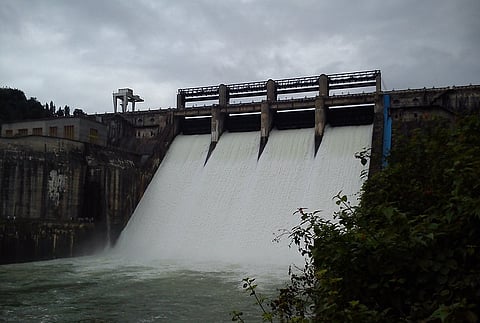

Once a city brimming with lakes and rivers running across its boundaries, Bengaluru has now become a city of concrete. Rapid urbanisation, increasing population and inefficient management of resources has resulted in the city growing parched day after day. In order to solve the crisis of water shortage, the Karnataka government has proposed a new infrastructure project to bring 18 TMC of water from the Bhadra river, located in Bhadravati in Shivamogga, to Bengaluru, about 290 kilometres away.
B Shamasundar, the superintendent engineer of the Water Resource Department, says that a week ago, the department received a direction from the Chief Minister’s Officer asking them to ascertain the viability of the project. The ambitious plan is to construct pipelines from the Bhadra Dam in Shivamogga’s Bhadravati to Bengaluru city.
“The plan is just in the proposal stage and may cost around Rs 7,000 crore. But the actual cost estimation will take place only after the proposal is approved by the state government and a feasibility report is obtained,” Shamasundar said.
Why not look for sustainable solutions?
Speaking to TNM, Dr Sharadchandra Lele, distinguished fellow in Environmental Policy and Governance with the Ashoka Trust for Research in Ecology and Environment (ATREE), says that the state government must focus on sustainable solutions to tackle the issue of water scarcity in the city.
Dr Lele maintains that the Bengaluru Water Supply and Sewerage Board must plug leakages in the Cauvery Water pipelines, which would save about 40% of the 1,400 MLD the city draws from the river every day.
“40% of the Cauvery water is currently going to waste simply because the BWSSB is unable to plug the leakages in the pipelines. If these are maintained and leakages are plugged regularly, there will be more water to drink,” Dr Lele says.
In addition, the water supply and civic authorities in Bengaluru have failed to reuse wastewater effectively, resulting in poor groundwater recharge. “Recycled wastewater can be used for construction and other purposes that are not meant for drinking. This is the second option where the administration fails. If the properly treated water is used to recharge lakes, the groundwater tables will be stabilised. Why do we have to look at big infrastructure projects when there are sustainable solutions. Disrupting water supply of people living in the Badhra catchment is not fair to the locals,” Dr Lele says.
The proposal has drawn flak from farmers in the Malnad region, who fear they will not have adequate water for irrigation. According to Karnataka Rajya Raitha Sangha’s Shanthakumar, the project will create an ecological imbalance in addition to lower the prospects of good yields for farmers in Shivamogga and surrounding areas.
“Generally, after the monsoon, the Bhadra river would be filled to the brim. The government cut down so many acres of forest land and the water levels began receding. People living in the catchment area had never seen the river bed dry. Although water levels decreased during summer, there would be water enough for a shallow stream. It’s not so any more,” Shantakumar says.
The farmers in the catchment area were shocked when the river had run dry in November of 2015, he says. Since then, the water level has decreased due to excessive pumping. “If they take 18 TMC from here, what will we have?” Shantakumar questioned.
The farmers in Malnad region have already been affected by the Upper Bhadra Project, which aims to lift 17.4 TMC water from Upper Tunga river and 29.9 TMC of water from the Bhadra river to irrigate an extent of 2,25,515 hectares via micro-irrigation in drought-prone districts of Chikkamagaluru, Chitradurga, Tumakuru and Davanagere and to fill up 367 tanks in drought-prone taluks of the three district through Chitradurga branch Canal and Tumkur branch canal.
“As it is so much water is being diverted to other areas. If an additional 18 TMC water is diverted to Bengaluru, we will end up creating a water crisis in the Malnad region. Besides, sustainable solutions are less expensive and the diversion proposal is going to cost more. There will be capital costs and maintenance costs, and the government will end up spending so much money when there is a cheaper and sustainable option available,” Dr Lele adds.